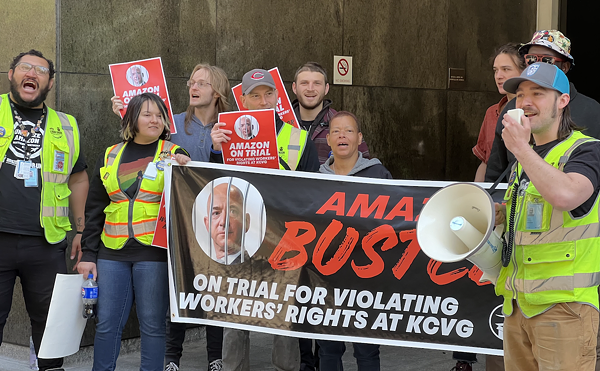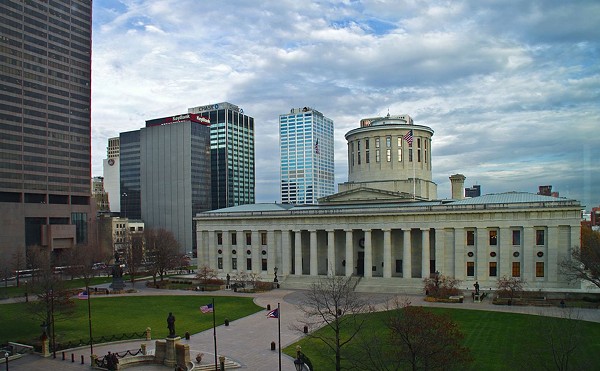|
We always want Opening Day to be a day of "Hello," but it couldn't possibly go that way March 31 for the Reds. As the Reds and their public communed for the first time following an offseason of sorrow, "Goodbyes" had to come first.
So, belatedly, "Hello" to Dusty Baker, Corey Patterson and Coco Cordero. Here's hoping you don't say "Hello" to Brandon Webb's like too often this season, and may the long season last all the way to the end.
But you can't say "Play ball" in Cincinnati without first remembering Bob Howsam, Chief Bender and the ol' lefthander, who all said "Goodbye" since the Reds ended their 2007 season.
Howsam, builder of the Big Red Machine, died at his home in Sun City, Ariz., of a heart ailment on Feb. 19 at age 89. Bender, his trusted assistant who put in 39 years tending the Reds farms, died on Feb. 27 at age 88 following a fall in his Hamilton home. Joe Nuxhall died, to the grief of all Cincinnatians and Reds fans, last Nov. 15 at age 79.
Without these men, the Reds as a glorious Cincinnati institution are almost unimaginable. Indeed, the Reds as any kind of going concern might be jeopardized.
While Reds fans await their next moment through these dark seasons of defeat, they remember the Big Red Machine. Without those memories of past glory, where would the Reds be today?
Older Reds fans can't let go of the Big Red Machine, nor should they. No other Reds clubs so dominated baseball as those memorable outfits from the 1970s, the clubs that defined the new National League little ball with the establishment of artificial surfaces and rounded outfield fences. The Big Red Machine is the standard, not just for all Reds clubs that followed but for all the Reds clubs preceding.
The rest of us could pull for the Big Red Machine or just revere those clubs from a respectful distance. The players certainly made their mark, counting Joe Morgan, Johnny Bench and Tony Perez as their Hall of Famers while, of course, not counting Pete Rose.
But somebody had to design and build the machine. Somebody had to look at Riverfront Stadium, a new environment for baseball in 1970, and visualize the components of a winning ball club. And someone had to connect Cincinnatians with those clubs as family.
Howsam and Bender created the message, the players were the message and Nuxhall, with Marty Brennaman, was the messenger.
Born in Denver, Howsam came of age trying to dress his home city with the trappings of major league status. His family owned the minor league Denver Bears, and he wanted to take it higher in a day when Denver as a major league city was his own dream.
So he always looked for ways to make new ideas work. The Reds benefited as much as any franchise he ever touched.
Howsam helped found the Denver Broncos, an American Football League charter franchise, in 1960. At about the same time, he helped found the Continental League, which was supposed to put big-time baseball in neglected towns like Minneapolis, Denver and Houston. Instead, Major League Baseball expanded by four clubs and the Continental League accomplished much of its mission without ever playing a game.
Howsam moved on to the St. Louis Cardinals, winning a World Series ring as their general manager in 1964. In 1967, he came to Cincinnati, where he set about building the Reds.
Though the Reds put pieces together before Howsam arrived, they also created a fine mess under the former regime. Right after Bill DeWitt traded Frank Robinson to Baltimore, Robinson won the American League Triple Crown in 1966. Meanwhile, the Reds were stuck with their take from that deal — Milt Pappas, Jack Baldshun and Dick Simpson.
Through a deft set of four trades over the next three years, Howsam packaged those players and small parcels of spare parts to acquire power-hitting left fielder George Foster, shortstop Woody Woodward, relievers Pedro Borbon and Clay Carroll and swing pitchers Jim McGlothlin and Tony Cloninger. Foster, Borbon and Carroll all played huge roles for the great Reds clubs that followed. McGlothlin, Cloninger and Woodward were more than serviceable.
That set of trades might stand as Howsam's most astute performance, even if it isn't his most famous. On Nov. 29, 1971, he set the Big Red Machine for good by dealing a package including first baseman Lee May and second baseman Tommy Helms to the Houston Astros for a haul featuring Morgan, centerfielder Cesar Geronimo and pitcher Jack Billingham.
In essence, Howsam traded power for speed in response to a losing effort in 1971. Howsam knew ahead of anyone playing in the new style of stadium that the path to titles would be paved with speed in the outfield and on the base paths, to say nothing of power pitching.
The trade stands as Howsams finest moment. Again, though, his insights under the radar more truly proved his acuity.
For example, Howsam said in later years that a frustrating 1971 campaign convinced him that Sparky Anderson was the man who would manage the Reds to championships. Howsam hired "Sparky Who?" as his manager entering the 1970 season and immediately won a pennant. The Reds fell from 102 wins to 79 in 1971, but Howsam admired Anderson's composure.
Anyone can keep his head in good times, Howsam said, but Anderson showed he could do it in tough times as well. The Reds went on to win another pennant in 1972, then the World Series in 1975 and 1976.
Throughout Howsam's time with the Reds, Sheldon "Chief" Bender served as his right-hand man, a trusted consultant on trades and the manager of a fertile player development system. Long after Howsam left the Reds in 1977, Bender remained in the clubs brain trust. Through the 1980s, his opinion within the organization could not be overestimated.
Even into the 1990s, former Reds General Manager Jim Bowden retained Bender as his player development director. Bowden cooked up frequent tension within the system by constantly moving players up and down, upsetting the continuity for minor league clubs even more than normal. In that light, Bowden found Bender indispensable.
"Chief makes people feel good," Bowden said.
If Bender made the farm executives feel good, no one made the rest of us feel better than Nuxhall. Along with Brennaman, he described the Big Red Machine over the radio, told their story in his understated way and let the action speak for itself. Cincinnatians and Reds fans loved him for it.
The Reds honored Howsam, Bender, Nuxhall and the late former pitcher Bob Purkey during pregame ceremonies on March 31 before losing 4-2 to the Arizona Diamondbacks. Players jogged onto the field wearing Nuxhall's number 41 during introductions. Reds starter Aaron Harang wore the jersey throughout his start.
It's hard saying "Goodbye," but considering men of their stature its correct to give one last nod for Howsam, Bender and Nuxhall. Before the Reds could throw a pitch or swing a bat, we needed to remember that the men who made the Reds their best have passed.
Now we can move on. Play ball.
CONTACT BILL PETERSON: [email protected]





